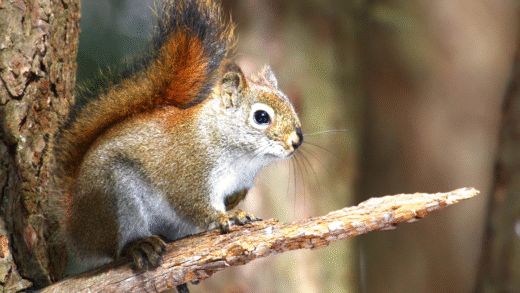Ocean quahogs, ancient clams, can live over 500 years, making them among the longest-lived animals. Their unique features, such as slow growth and adaptability, highlight their ecological importance. Studying them offers insights into longevity, resilience, and environmental health, while their growth rings parallel those of trees, emphasizing their role in marine ecosystems.
What is an Ocean Quahog?
Ocean quahogs are a species of clam found in the North Atlantic Ocean. Scientifically known as Arctica islandica, these clams are renowned for their impressive longevity and unique characteristics. They have a robust, rounded shell that can reach sizes up to 4 inches in diameter. Their shells are typically dark brown to grayish, with concentric growth rings that can be used to determine their age.
These clams primarily inhabit sandy and muddy substrates at depths of 20 to 200 meters. They are filter feeders, meaning they obtain their food by filtering plankton and other particles from the water. This feeding method not only sustains them but also plays a crucial role in maintaining the health of their ecosystem.
Ocean quahogs are fascinating creatures that have adapted to various environmental conditions, making them resilient to changes in their habitat. Their ability to thrive in colder waters and endure lower oxygen levels sets them apart from many other clam species.
How Long Can Ocean Quahogs Live?
One of the most captivating aspects of ocean quahogs is their astonishing lifespan. These clams can live for over 500 years, making them some of the longest-lived animals on Earth. For example, a well-documented ocean quahog named “Ming” was found to be 507 years old. This incredible longevity is attributed to their slow growth rate and the stable conditions in which they live.
Research shows that ocean quahogs can reach sexual maturity at around 5 to 10 years of age, but they continue to grow slowly throughout their lives. Their age can often be determined by counting the growth rings on their shells, similar to how one might age a tree.
Understanding the lifespan of ocean quahogs not only highlights their unique biology but also raises questions about the environmental factors that contribute to such longevity.
What Makes Ocean Quahogs Special Compared to Other Clams?
Ocean quahogs stand out in the clam family for several reasons. Firstly, their age is a remarkable feature; they can outlive many other marine species. While most clams have a lifespan of 10 to 30 years, ocean quahogs challenge this norm with their centuries-long existence.
Secondly, their ability to thrive in harsh conditions makes them particularly special. They can tolerate low oxygen levels and colder temperatures, which would be detrimental to many other species. This resilience allows them to inhabit areas where other clams cannot survive.
Lastly, ocean quahogs play a vital role in the marine ecosystem. They help filter the water, contributing to the overall health of their environment. Their presence can indicate the health of the marine ecosystem, making them a key species for researchers studying ocean health.
Notable Examples of Particularly Old Ocean Quahogs
Among the many ocean quahogs, a few have gained notoriety due to their extraordinary age. One of the most famous is the clam known as “Ming,” which was discovered off the coast of Iceland and dated to be 507 years old. This discovery not only amazed scientists but also sparked interest in the study of longevity in marine life.
Another notable example is a clam found in the waters off the coast of the United States, which was estimated to be around 400 years old. Such instances of extreme age challenge our understanding of marine biology and the factors that contribute to longevity.
These remarkable clams serve as a reminder of the hidden wonders of the ocean and the need for conservation efforts to protect their habitats.
How Do Scientists Determine the Age of Ocean Quahogs?
Scientists determine the age of ocean quahogs primarily through a method called growth ring analysis. Much like trees, these clams exhibit growth rings on their shells, which can be counted to estimate their age. Each year, ocean quahogs add a new layer to their shells, reflecting their growth patterns. This process requires careful examination and sometimes involves slicing the shell to view the rings clearly.
Another technique involves radiocarbon dating, which can provide insights into the age of older specimens. This method measures the decay of carbon isotopes in the clam, offering a reliable age estimate. Furthermore, researchers often combine these methods with environmental data, such as water temperature and salinity, to better understand how these factors influence growth rates and longevity.
- Growth ring analysis: Counting rings to estimate age.
- Radiocarbon dating: Measuring carbon decay for older clams.
- Environmental correlation: Analyzing habitat conditions to gauge growth.
By utilizing these methods, scientists gain a deeper understanding of the lifespan and life history of ocean quahogs, contributing to broader ecological research.
Why Are Ocean Quahogs Considered One of the Longest-Lived Animals on Earth?
Ocean quahogs are regarded as one of the longest-lived animals on Earth due to their remarkable ability to survive for over 500 years. This extraordinary longevity is attributed to several factors:
- Slow growth rate: Ocean quahogs grow slowly, which contributes to their extended lifespan. Their energy is directed towards maintaining bodily functions rather than rapid growth.
- Stable environments: They thrive in stable, cold waters where conditions rarely fluctuate. This stability is crucial for their long-term survival.
- Low predation: Their tough shells and deep burrowing habits protect them from many predators.
Additionally, ocean quahogs have a unique metabolic rate that allows them to conserve energy efficiently. This slow and steady approach to life contrasts sharply with other marine species, which often have shorter lifespans. The insights gained from studying these clams not only highlight their individual resilience but also inform research on aging in various species.
Environmental Conditions That Allow Ocean Quahogs to Live So Long
The longevity of ocean quahogs is closely linked to their environmental conditions. These clams prefer:
- Cold temperatures: Ocean quahogs are typically found in colder waters, which slows their metabolism and prolongs life.
- Stable habitats: They inhabit sandy and muddy substrates that provide a safe environment, reducing stress from environmental changes.
- Low oxygen levels: Surprisingly, they can tolerate lower oxygen levels than many other species, allowing them to thrive where others might not.
Understanding these conditions is vital for conservation efforts. Protecting their habitats ensures that these ancient clams continue to thrive, offering insights into marine ecosystems and longevity.
What Can We Learn from the Lifespan of Ocean Quahogs?
Ocean quahogs offer valuable insights into longevity and resilience in the animal kingdom. Their impressive lifespan of over 500 years raises important questions about aging and survival strategies. Studying these clams can teach us about the biological processes that contribute to long life, potentially offering lessons for human health and aging.
Moreover, the environmental conditions that allow ocean quahogs to thrive highlight the importance of habitat conservation. Protecting their ecosystems ensures the continued existence of these ancient creatures and preserves the knowledge they hold about longevity. Their ability to adapt to changing conditions also serves as a reminder of the resilience needed in our own lives.
Overall, ocean quahogs symbolize the interconnectedness of life and the lessons nature can impart regarding endurance and adaptability.
Comparing Ocean Quahogs to Trees in Age Measurement
When it comes to measuring age, ocean quahogs and trees share fascinating similarities. Both species exhibit growth patterns that can be used to determine their age. Just as trees have growth rings that indicate yearly growth, ocean quahogs have concentric rings on their shells that reflect their age.
For instance, scientists can count the growth rings on a clam’s shell in a manner similar to how one would assess the age of a tree. This analogy not only aids in understanding the lifespan of ocean quahogs but also reinforces the significance of both species in ecological studies. Both clams and trees contribute to their ecosystems in unique ways, and understanding their growth can provide insights into environmental health.
The Role of Ocean Quahogs in Their Ecosystem
Ocean quahogs play a critical role in maintaining the health of marine ecosystems. As filter feeders, they help to clean the water by removing plankton and other particles. This process not only sustains their own diet but also contributes to the overall clarity and quality of the ocean water, benefiting other marine life.
Additionally, their presence in the ecosystem can serve as an indicator of environmental health. Changes in ocean quahog populations can reflect shifts in water quality and habitat conditions. Their longevity also means they can provide valuable data over time, helping researchers understand the impacts of climate change and human activity on marine environments.
In summary, ocean quahogs are not just ancient clams; they are vital components of their ecosystems, showcasing the intricate relationships within marine life and the importance of conservation efforts.





Comments are closed.